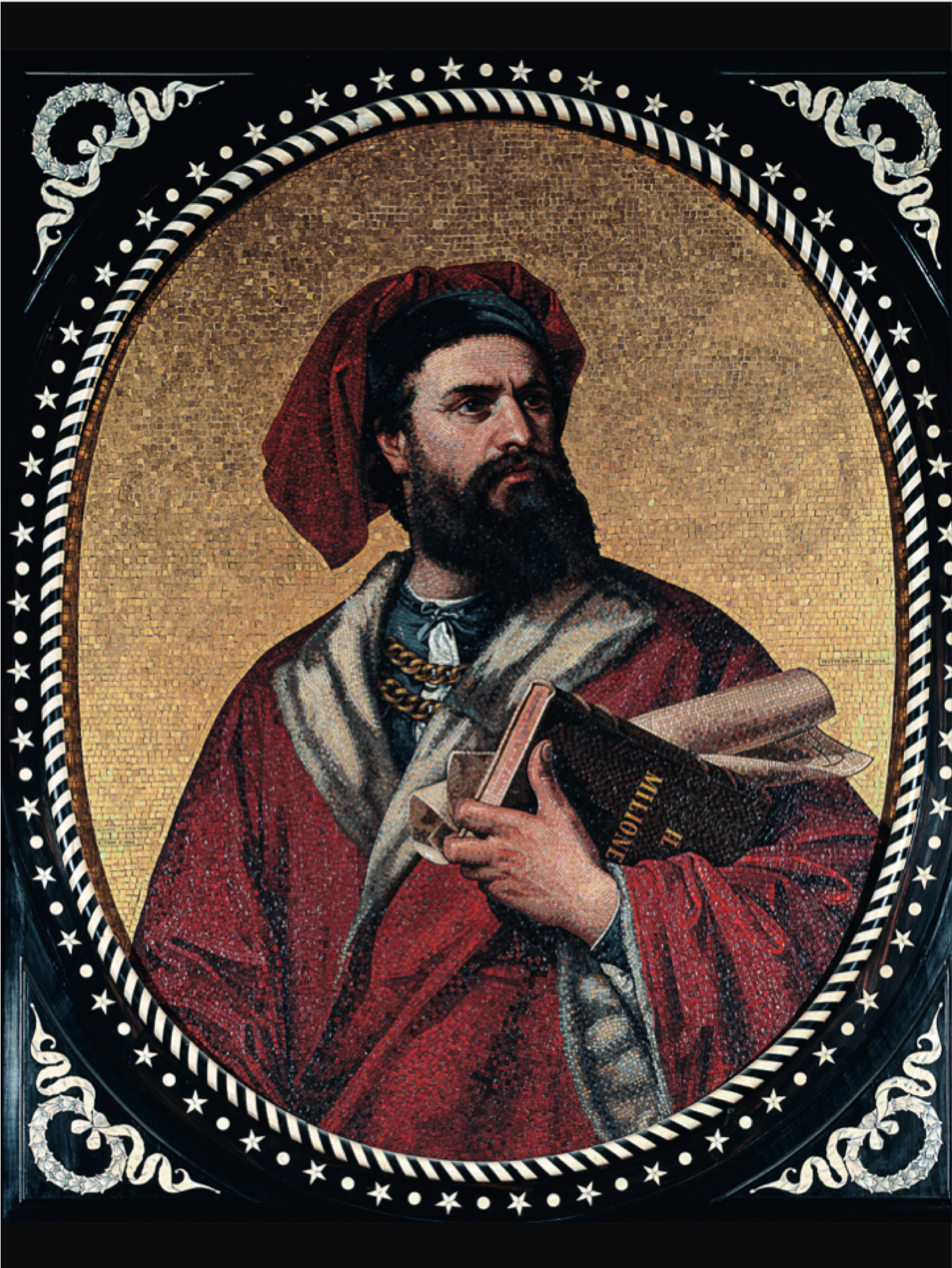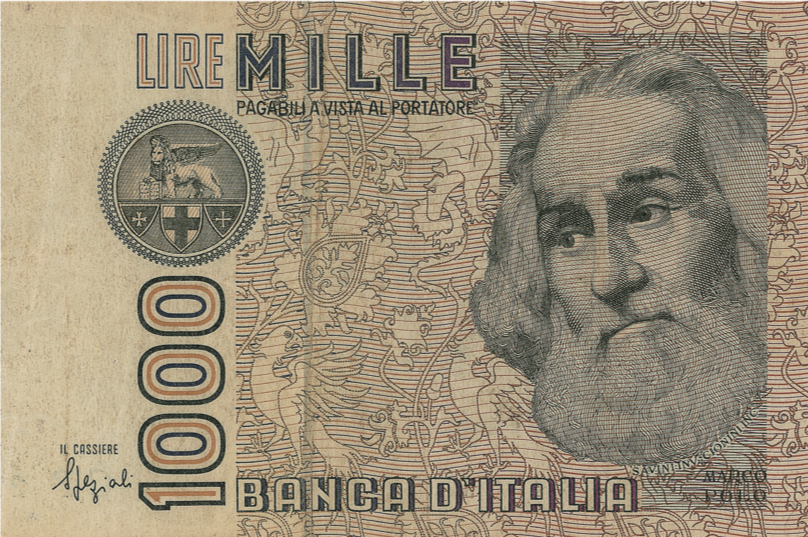by Luca Govoni
Il Milione informed 13th-century travellers on the customs and habits of the Orient. They discovered wine’s omnipresence. But not made from grapes...
“Lords, emperors, and dukes and counts and knights, princes and barons, and all who delight in knowing diverse generations of people and conditions of the world, take this book, and you will find the wonderful and varied things of great Erminia, and of Persia and Tartaria and India and many other provinces, as this book will relate to you openly, as mister Marco Polo of Venice recounted according to that which he saw with his own eyes, and many others he saw not but heard from sages and men of faith.” Thus spake Marco Polo in prison in Genoa to the poet Rustichello of Pisa.
The stories that we find in Devisement du monde, which later became Il Milione, under the putative surname Marco, are those of a merchant who describes in dutiful detail the places, products, goods, spices, customs and habits of the peoples along the Silk Road. The adventure of Marco Polo, his father Niccolò and his uncle Matteo, began in Venice in April 1271 and lasted for 24 years. From Venice to Constantinople, the three men travelled through eastern Turkey, then from what is now Iraq they journeyed through Persia, visiting Baghdad. Then they proceeded through the Straits of Hormuz, doubled back, on towards Afghanistan and they came to Karakorum, ancient capital of the Tartars, where they met Qubilai, whom the author called Coblai Kane.
They travelled on, skirting the vast mountain range of Tibet until the kingdom of Tenduc, then Giandu, Canbalu and Sugni (Su-chou, a locality near Shanghai). The return, in the company of the Mongolian princess Cocain from Cambaluc as far as Persia, brought the legs of Java, the island of Ceylon, Malle (near Oman) and Mada- gascar, then the provinces of Abyssinia, and finally back to Hormuz, Trabiz, Tresi- bonda, Constantinople, the Greek island of Negroponte, and lastly Venice.

By indicating specific places and describing their customs, Marco Polo gives us precious information regarding the drinks of the Oriental territories. Whether speaking about wine made from grapes, as witnessed on the table of the Great Kane groaning under “goblets full of wine or milk”, or wine from dates and the like, or other foodstuffs such as spices or fruit, the text is a fundamental account of domestic habits, dietary and non, aimed at satisfying curiosity and attracting interest to the Land of the Seri. In the eight realms of Persia, where they make tapestries of gold and silk, there is abundant barley, millet, panic grass, fruit and wine, perhaps Shiraz...
Then of the great China, Marco Polo describes Cormos, land of fabulous wares, where you find a multitude of spices and they make “wine of dates”, obtained by fermenting dates in water. On this point, to explain the type of product the author referred to, we must specify that Arabic has two words that translate into the term wine: khamr and nabîdh. The former refers to wine; the latter to alcoholic beverages obtained by fermentation, principally of fruit.
The Hanafi school, the first legal school of the four Madhahib of Sunni Islam, citing Muhammad himself, holds that the liquors of dates, barley, honey or raisins and even millet are accepted provided they do not intoxicate excessively. “In the great province of Tagut,” (Tangut, in the city of Sachion), “they have wine and food aplenty” and “they sup mare’s milk, and they treat it so it seems like white wine: it is good to drink, and they call it chemmesi.” The author is speaking about kefìr, a beverage made from fermented milk, which can be from sheep, goats, donkeys or cows, originally from the Caucasus and still very popular. Of the city of Giandu, on the other hand, we find the description of the magnificent palace of Coblai Kane “of marble and other rich stones”, the halls, the gilded rooms and the garden teeming with exotic animals.
However, it is in the enumeration of the guards that the author conveys the Emperor’s grandeur: some 12,000 men on horseback, the Quesitan, or the lord’s faithful cavalry, under the command of just four captains. Then there is the description of the table, with a special device for dispensing wine and other drinks. “And in the middle of this hall where the Great Lord holds court and table is an enormous vase of fine gold, holding wine as a barrel, and on each side of this vase there are two smaller ones: the large one holds wine, and the two smaller ones contain beverages."
In the province of Caragian, Ardandan and also of Caugigu, they drank wine made from rice and spices, “and it is very clear and good, intoxicating well like wine,” while in the province of Gaindu (in the region now known as Sichuan) “wine of the vine they have not, but they make wine from wheat and rice with many spices, and it is good drinking.” In the ream of Samarra and in Fansur they make wine from the trees. “They cut the branches, which drip, and the liquid that falls is wine; and overnight it fills a large cup attached to the trunk, and it is very good.” Lastly, in the realm of Coilun, “they make good wine from sugar,” while on the island of Zachibar “they have no wine of the vine, but make it from rice and sugar and spices.”

Any interest in a written testimony regarding the presence of wine and beverages will thus find fertile terrain in the analysis of Il Milione, but also in the accounts of Francis- cans, Dominicans, and more in general of monks who, through the will of the church, ventured towards those faraway places. In fact, before Marco Polo, Giovanni of Pian del Carpine and Fra’ Guglielmo of Rubruk were the leading characters in the tales of the Orient of the Tartars. The former, at the age of 63, a Franciscan, was commissioned by Pope Innocent IV in 1243 to negotiate Christian peace and asked by him to bring two Bulls to the Great Khan of the Mongolian Empire, who in that period was Güyük Khan, grandson of Genghis Khan. In his Historia Mongalorum, the Franciscan relates that the Emperor received them with wine, strong liquor and cooked meats, but he also specifies that “they have no wine, liquor or fermented beverages but that which has been sent there or donated by other nations."
The latter, on the other hand, a Flemish cleric and missionary, in his travel memoirs in Asia, titled Itinerarium fratris Willielmi de Rubruquis de ordine fratrum Minorum, Galli, Anno gratia 1253 ad partes Orientales, describes the dietary habits of the Tartars in great detail, saying that “in winter they make an excellent drink with rice, millet, wheat and honey, clear as wine, because real wine comes to them only from faraway regions.” So Friar Guglielmo, too, testifies that wine was not produced in the Orient, but that it came from trading.
And the Book of the Two Mohammedans, as the writer Rolando Perri tells us in his in-depth essay Marco Polo’s European Pre- cursors, includes in the tales of the merchant Solimano, (who has no connection with Solimano the Magnificent, Sultan of the Ottoman Empire, who lived more than 500 years later), instruction on the drinking customs in the Orient. Solimano wrote that there “they drink wine made from rice, and know not that made from grapes."
For a long time, the great travel stories, such as Marco Polo’s Il Milione, Raffaello Barberini’s The Muscovy Report, Fernando Colombo’s Histories, or the Tale of the First Journey Around the World by Antonio Pigafetta, were authentic official documents to be used by anyone who decided to journey towards the same destinations. On one hand, these texts were used as manuals, and their scientific application on subsequent expeditions allowed the mapping of the known world by its places, habits, customs and traditions.
On the other hand, these accounts, combined with the imaginary ones, allowed man to think and dream about faraway lands, peoples and languages very unlike the daily life in the places he resided in. The journey towards new worlds, the lands of Lestrigoni and Cilopi, the epic tale of Aeneas, the adventures of Don Quixote and Sancho Panza rollicking through the Spain of Cervantes, the catastrophes and persecutions of the journey undertaken by Voltaire’s Candide, or Yorick’s Sentimental Journey through France and Italy by Sterne.
After all, all they did was promote the same idea, which the Greek poet Konstantinos Kavafis relates the meaning of in the conclusion of his splendid lyric Ithaca: “And if you find it poor, not for this will Ithaca have deluded you. / By now grown wise, with all your experience upon you / you will have already understood what Ithaca means.” In the poem, the path becomes the destination, with the wish “that the road be long, fertile in adventure and in experience.” Ithaca is wisdom, and the voyage to the island a metaphor for life. And if travelling towards Ithaca seems to have been an odyssey, with all due respect to Penelope, travelling east in the 13th century to the ends of the Earth was certainly nothing less.








